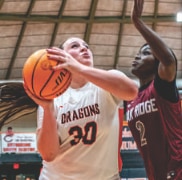More updates concerning COVID-19
Americans are starting to come to grips with the severity of the COVID-19 pandemic. Several different scenarios can occur. But much of what happens is dependent on what we do now.
There are two strategies.
One is “mitigation” or social distancing to decrease the rate of transmission so as not to overwhelm our healthcare system, but even the best-case scenarios have unacceptable casualty rates. The other is “suppression” and involves going on the offense against the virus.
Most rich nations have staked their bets on suppression, but both strategies are necessary.
One form of suppression is extreme mitigation with months of forced social distancing. This would generally be unacceptable in democratic nations and it would have a devastating effect on the economy, likely creating a global depression.
Conventional suppression would start with widescale testing for the virus. Some tests can now provide results in five minutes. Antibody testing for a person’s immune status is being done in some parts of China. It could rapidly tell us if someone is immune and no longer a source of infection, freeing them to return to the workforce.
There are three things that determine if someone exposed to this virus gets sick with fever, fatigue, dry cough, and shortness of breath. One has to do with the virus itself. Second, is the person’s resistance. The third depends on how much of the virus they get and where in their body they get it. This is often misunderstood.
A virus is not a bacterium and has no means of reproducing outside of its living host cell, and this virus can usually not remain viable on a surface in adequate numbers to cause disease for more than a few hours. It also doesn’t seem easy to transmit by eating. Infection mostly comes from breathing the direct viral-laden droplets from someone’s mouth or nose.
This is apparently easier than was originally thought and might occur from casual conversation within a couple of feet of the other person.
Some people can shed virus when asymptomatic and some are “super shedders,” so the CDC now suggests everyone wear a mask in public. If you wear a mask as a non-infected person and scratch your nose under the mask with viral-contaminated hands, you may provide the virus greater access to your upper airway.
Instead of being obsessive about cleaning surfaces, it is better to avoid getting unwashed hands in your nose or eyes and cleaning more high contact surfaces such as doorknobs.
When a newly produced virus comes out of the cell of an infected person, it incorporates some of the person’s cell membrane into its viral capsule.
This fatty membrane is exactly what soap dissolves in water. So, hand washing is superior to hand sanitizers. If used, sanitizers should contain at least 60-percent alcohol.
The body responds to infection by producing chemicals called cytokines. Most of the deaths from this virus are the product of an excessive “cytokine storm”. If proven effective, a cytokine-blocking drug currently used to treat inflammatory arthritis might save many lives.
Artificial intelligence could also provide us with other mechanisms of action used by the virus that might direct therapeutic strategies.
There are hundreds of clinical studies testing about 70 drugs to fight the virus.
The World Health Organization has started a large trial involving many nations looking at the five most promising drugs including antivirals for HIV and one used in the SARS outbreak in 2003.
This will be an “adaptive” trial that will drops treatments proving ineffective, giving us the fastest route to what works.
Several vaccines are already being tested in humans on accelerated schedules.
One targets the virus’s RNA; another the “spike” protein it uses to invade a cell. Several more conventional vaccines to the viral capsule are already being geared for mass production when testing is complete.
Injectable antibodies to immediately fight the virus are being tested. Some are taken from the blood of people that have already recovered from the infection. Others are made by genetically engineered rats.
This fall, there is about a three-out-of-four chance that the U.S. will have a second outbreak of the virus. But our efforts are global and Herculean. We will win that fight.

